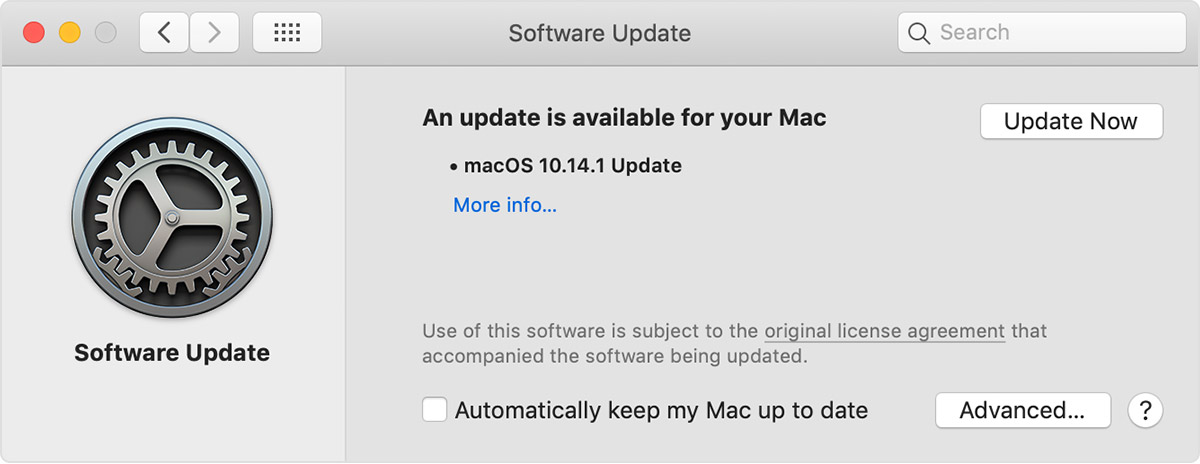NOTE: Apple released a significant dot upgrade to Mojave this morning (10.14.1). See my update note at the end of this article.
Within the next few weeks Apple will release the latest version of the operating system: Mojave (v. 10.14). My strong suggestion is that you not upgrade any systems that you depend upon when the new OS is released.
Apple, and its legion of beta testers, have worked very hard to provide a stable version with all kinds of new features. The problem is, that we don’t know FOR SURE that they have been successful. It won’t hurt to wait for a while after the initial release to make sure everything is working OK, or, if there are problems, for developers to update their software.
Keep in mind that no client ever has hired you to edit using a certain version of macOS. They have hired you to tell a story, on time, on budget, with great quality. Not upgrading will not affect your client relationship. Not delivering a project because your software, plugins or codecs are not compatible with an update, will.
WHO SHOULD NOT UPGRADE?
Pros Of Upgrading a Mac To Mojave If you’re looking to upgrade to Mojave, you’re obviously expecting it to add more features to your machine. After all, that’s what the updates are for. However, like a coin, there are two sides of upgrading to a newer version of macOS on your Mac. If you haven't updated to Catalina yet, read on to find out how to update to Catalina or Mojave from High Sierra, Sierra, El Capitan, Yosemite, or even older version of Mac OS X below.
If you depend upon a 32-bit program, such as Final Cut Pro 7, do NOT upgrade. Ever. Apple has already said that 32-bit applications will not be supported in future operating systems.
If you need to run FCP 7, either plan on never upgrading your editing computer, or create a dual-boot disk where you can revert back to an earlier OS for editing. Ideally, FCP 7 should run on Sierra (macOS 10.12) or earlier.
If you depend upon DVD Studio Pro, never upgrade. DVD Studio Pro runs best on macOS 10.6.8. It can run on Mavericks (macOS 10.11), but nothing later.
TURN OFF AUTO-UPDATING
In an effort to keep all its systems on the latest version of macOS, Apple created an auto-update feature. This can cause media creators all kinds of problems if you don’t turn it off.
Here’s an article that explains what this is an how to turn it off.
Additionally, here are other articles you will find useful:
- Here’s an article the describes how to determine which of your applications are 32-bit.
- Here’s an article on how to create a dual-boot drive.
- Here’s an article on updating your media archives.
WHEN SHOULD YOU UPGRADE?
If you have a system you use for testing, feel free to upgrade immediately. That’s what testing systems are designed for.
However, if you are upgrading a system you need for daily production or editing, here are my suggestions:
- Never upgrade the OS in the middle of a project. Finish the project, then upgrade.
- For a major OS upgrade, I generally recommend waiting until a .1 update is offered. This gives developers a chance to test their products with the final, released version and fix whatever bugs are found in their software or Apple’s release.
Read the various blogs and support sites. Discover the problems, see if they pertain to you. When your current project is done and you’ve got time, upgrade. Don’t put unnecessary pressure on yourself to upgrade before you are ready.
Personally, I upgrade my testing system immediately upon format release; I no longer get involved in beta testing. All my other editing systems wait a few months before I upgrade them. This makes it easy to go back when necessary.
NOTE: Here’s an article that discusses when to update in more detail.

SUMMARY
New releases are always exciting – there are so many new features to explore.
However, we need to balance the new features against the risk of something breaking in a current project that prevents us from delivering on time.
Waiting won’t hurt. Upgrading too soon just might.
Yosemite To Mojave Upgrade
UPDATE – Oct. 30, 2018
Apple released a “dot One” update to Mojave a few minutes ago (v. 10.14.1). This was the maintenance release I was looking for before upgrading my system. So, to be safe, I’m going to wait a couple more days, in case something broke at the last minute. Then I’ll upgrade my production Macs to Mojave.
As with all updates, please remember to upgrade between projects; especially if you are close to finishing. Wrap your project, then upgrade. The upgrade will take about three hours.
UPDATE – Nov. 4, 2018
After I upgraded, I discovered that Ambrosia Software Snapz Pro no longer works. I needed to replace it. I also had issues that prevented Adobe applications like Premiere, Photoshop and Audition from opening. This may involve a call to Adobe Support to resolve, if it occurs to you. I was able to trash an old Adobe Application Manager app to get them working.

Upgrade To Mojave From Os X El Capitan
I’m seeing that Mojave tends to run slower than High Sierra on older (2013 – 2014) iMacs. I’m also running into FCP X hanging and needing to be force quit periodically. I can’t tell, yet, if this is unique to my system or a conflict between software.
As with all updates, allow time for things to go wrong and get fixed. Don’t update just before a deadline.